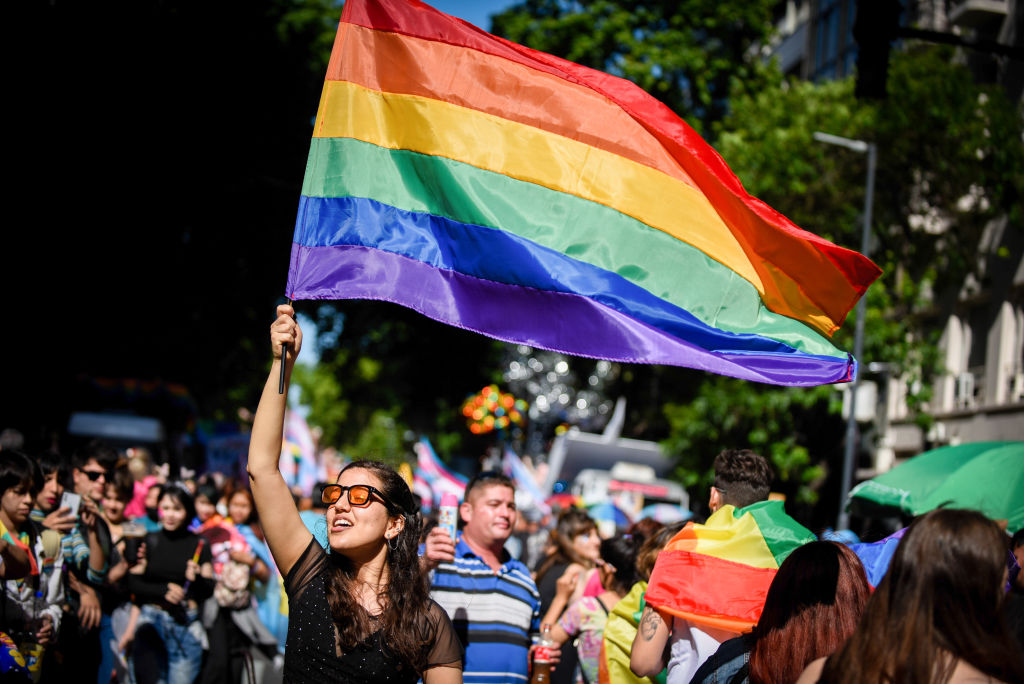‘A man’s a man for a’ that’ said Robert Burns. Well, perhaps not for much longer. The Scottish Parliament has recently voted in favour of legislation to allow lads to become lassies, and vice versa, merely by declaration. No medical intervention or diagnosis of gender dysphoria required. Under the Gender Recognition Reform (Scotland) Bill, which enters its committee stage this week, Scots will be able to change their legal sex at ages 16 and 17 after six months of living in their new gender, and after three months if aged over 18.
First Minister Nicola Sturgeon has enthusiastically embraced the claim made by her coalition partners, the Scottish Greens, that ‘transwomen are women’. Her government argued precisely this in court last week in a judicial review brought by the gender critical group For Women Scotland against the counting of transwomen as women on public boards.
The Scottish Government says that once people have changed their legal sex, with a gender recognition certificate, human biology becomes irrelevant. Rishi Sunak is equally adamant that it does not. In England, ‘self-ID’, as it is called, has been rejected by a Conservative government that insists on defining women on the basis of biological sex.
We may end up with different definitions of what a ‘woman’ is north and south of the border.
Confused? You will be. Forget the Northern Ireland Protocol – an existential gender border is being drawn across the British mainland. We may end up with different definitions of what a ‘woman’ is north and south of the border.
English citizens may be able to change their legal sex simply by crossing the border and arguing that they are ‘ordinarily resident’ in Scotland. Citizenship is shared throughout the UK. Already LGBT+ groups in England are planning what might be called a trans-migration to Scotland. However, they may find it rather difficult to return south as their new sex.
In England, trans people must still persuade a medical panel that they have gender dysphoria and must thereafter wait two years before they can receive their gender recognition certificate (GRC). Campaigners argue that a Scottish GRC should automatically be recognised in the way that some non-UK ones are. However, it is unlikely that gender recognition certificates issued by self-ID in Scotland will be valid in England. For her part, the Social Justice Minister, Shona Robison, says she is not assuming they will be recognised and the UK Home Office is sticking to the Old Testament on gender.
The Equality and Human Rights Commission has warned that there will be ‘confusion‘, to say the least, over different interpretations of the Equality Act, which supposedly applies across the entire UK. The Supreme Court has recently ruled that any Scottish legislation which modifies the operation of the law in the rest of the UK can be struck down and this issue is heading inexorably in that direction.
After self-ID, the ‘presumption’ in Scots law will be that transwomen cannot be excluded from women-only spaces, and it could be a criminal offence to disclose their previous gender. This will not be the case on the other side of the ‘gender-bread’ border – so-called after the emergence of the transgender teaching graphic, the ‘Genderbread Person’. This is because, in a very real sense, transwomen are not women under the Equality Act, as it is applied in England. The Home Secretary, Suella Braverman, has made warnings: Scottish transwomen cannot assume that they can come to England and sue a woman’s judo club for discrimination if they are refused membership on grounds of their original sex.
The Equality Act says that transwomen can be excluded from single sex groups as: ‘a proportionate means of achieving a legitimate end’. The example given in the guidance on the legislation is a counselling group for female victims of sexual assault. This effectively writes the primacy of sex over gender into the operation of the Act. The only way to exclude a transwoman with a gender recognition certificate from a single sex group is by reference to the sex they were born with, not their legal sex on their new birth certificate. Transwomen cannot be women in the self-ID sense if they can potentially be excluded from bodies on grounds of their natal sex.
The SNP leader has expended considerable political capital in promoting this legislation in a country which is lukewarm at best over self-ID. The issue has already split her party. The SNP suffered its largest parliamentary rebellion since they came to power fifteen years ago, and the first ministerial resignation.
Many SNP members wonder why the party of independence has become preoccupied with this arcane issue of little interest to Scottish voters, most of whom are pretty clear what they consider a woman to be. The Scottish civil service and NHS maternity services have been taken to task for replacing the word ‘woman’ with various euphemisms, including ‘anyone with a cervix’. There was alarm last week when it emerged that the ‘Scottish Tavistock’, the Sandyford sexual health clinic in Glasgow, was giving children as young as nine drugs to halt the onset of puberty.
The SNP’s Shona Robison says that the Gender Reform Bill ‘does not introduce any new right for trans people. It does not conflict with our continued strong commitment to uphold the rights and protections that women and girls currently have.’
This is disputed to say the least by feminist groups like For Woman Scotland and prominent Scots like JK Rowling. Opposition parties have tabled amendments objecting to the lowering of the age of consent to 16 and trying to reconcile the reform with UK Equalities legislation. But there seems no doubt that the bill will become law by Christmas, because Scottish Labour supports it too. Only the Scottish Conservatives are allowing a free vote. Jock Tamson’s bairns may never be quite the same again.







Comments